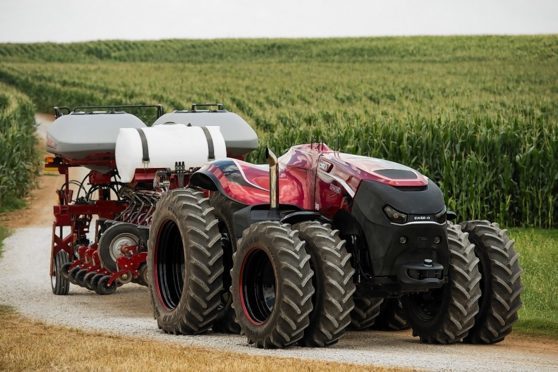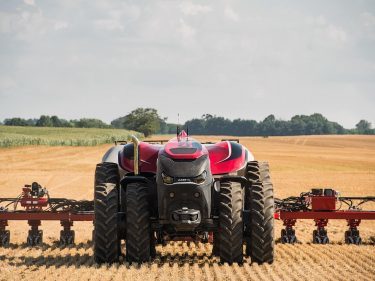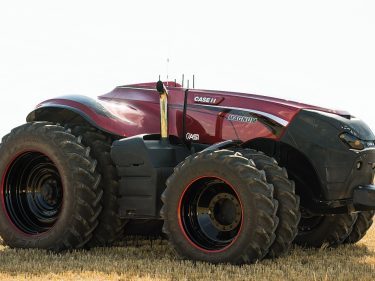Leading farm machinery manufacturer CNH Industrial gave an insight into farming of the future with the launch of new driverless tractors.
The company, which produces well-known brands Case IH and New Holland, said its new “concept autonomous tractor technology” would help address labour shortages and give farmers the option to work unmanned around the clock with real time data monitoring.
One of the products revealed at the Farm Progress Show in Iowa, USA, this week, as the cabless concept Case IH Magnum (pictured).
Case IH brand president, Andreas Klauser, said: “While we offer auto-steering and telematics on our equipment today for remote management of farm machinery and employees, this autonomous tractor concept demonstrates how our customers and their employees could remotely monitor and control machines directly. This technology will offer our customers greater operational efficiencies for tasks such as tillage, planting, spraying and harvesting.”
He said the tractor used radar, lidar (light imaging, detection, and ranging) and onboard video cameras, which enabled it to stop when stationary or moving obstacles were in its path.
The tractor was also designed to stop automatically if GPS signal or position data was lost, added Mr Klauser.
The company’s product marketing manager, Rob Zemenchik, said: “A farm manager can supervise the activities of multiple machines via a mobile tablet interface while he tends to other tasks or even operates another vehicle. Multiple autonomous tractors can work as one fleet or simultaneously in multiple sub-fleets assigned to separate fields, each assigned with pre-programmed maps and prescriptions. So you could have one tractor pulling a chisel plough followed closely by another one operating a planter. The opportunities for efficiency are substantial.”
The company also unveiled the New Holland T8 NHDrive, which maintains its cab giving farmers the option to drive it or use it in driverless mode.
CNH said: “The New Holland T8 NHDrive concept tractor maintains its cab to deliver operating flexibility, with traditional human operation for road transport and when performing tasks currently unsuited to automation.
“Autonomous mode is then engaged when compatible tasks are performed. In either format, the machines can be seamlessly integrated into existing fleets, and aside from the driverless technology they use a conventional engine, transmission, chassis and implement couplings.”


